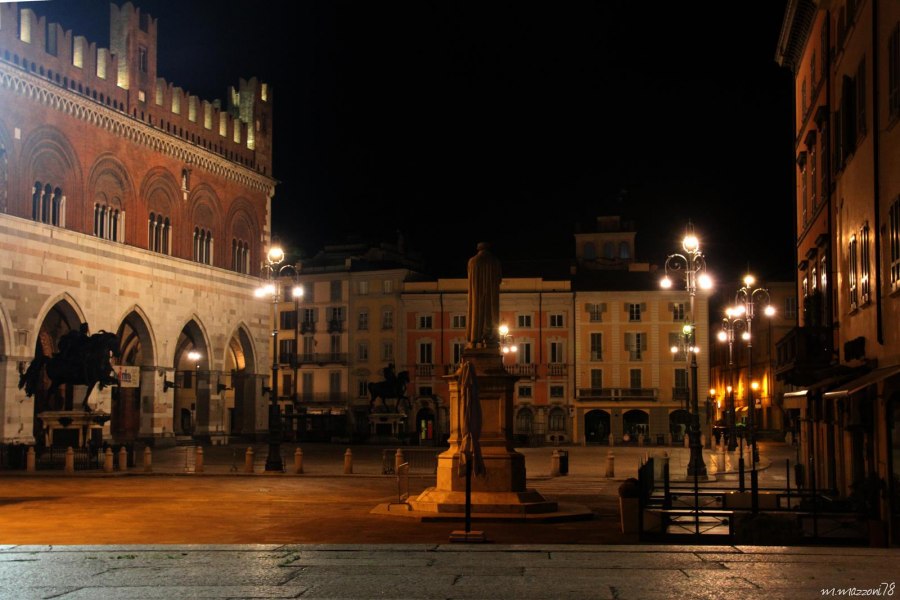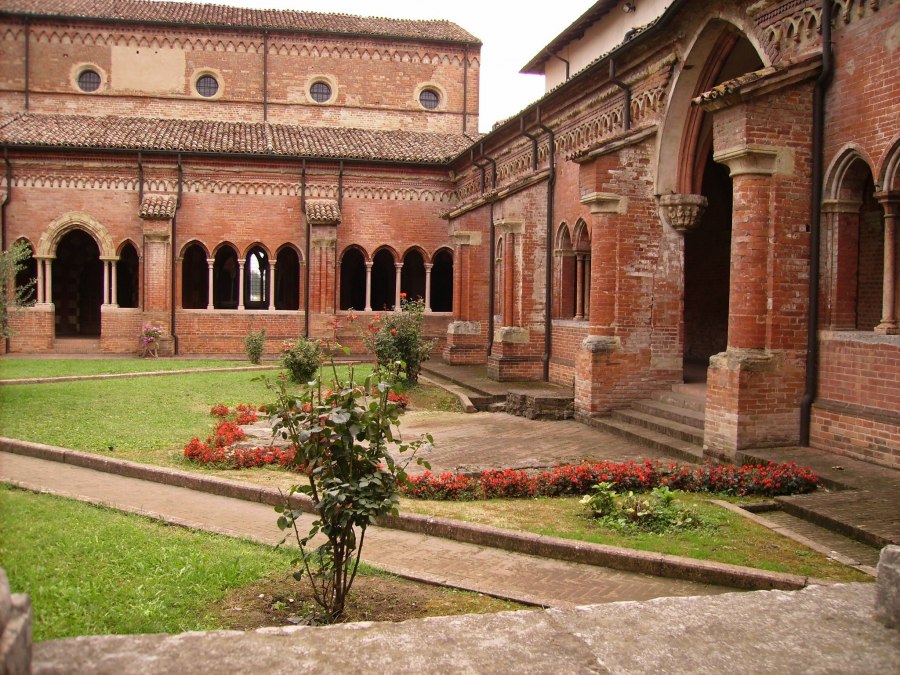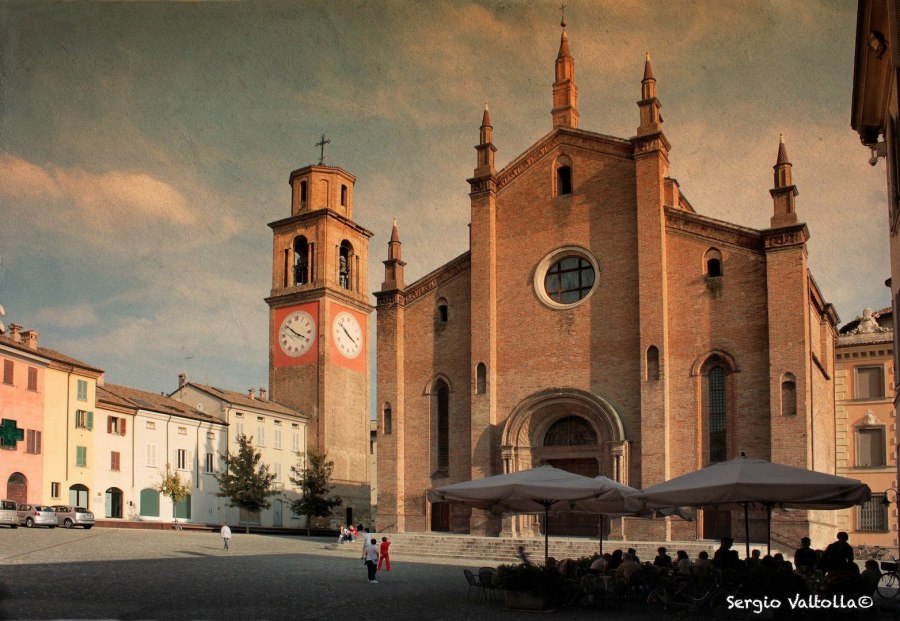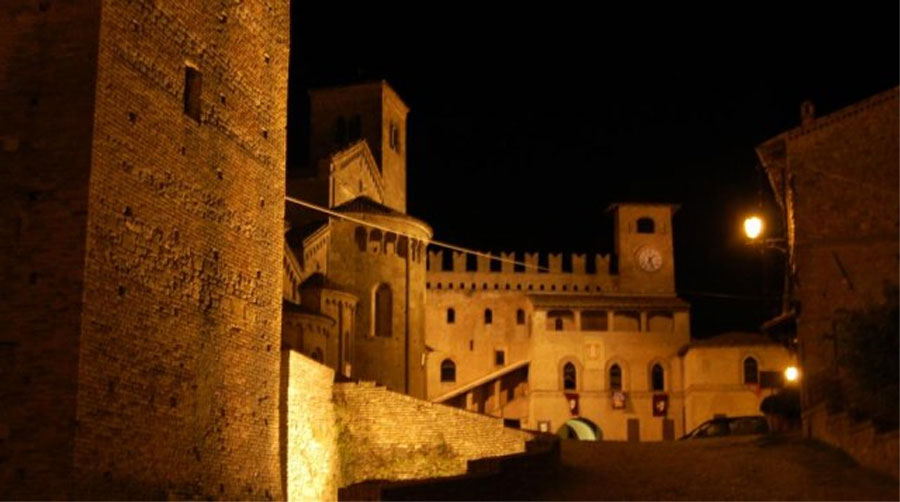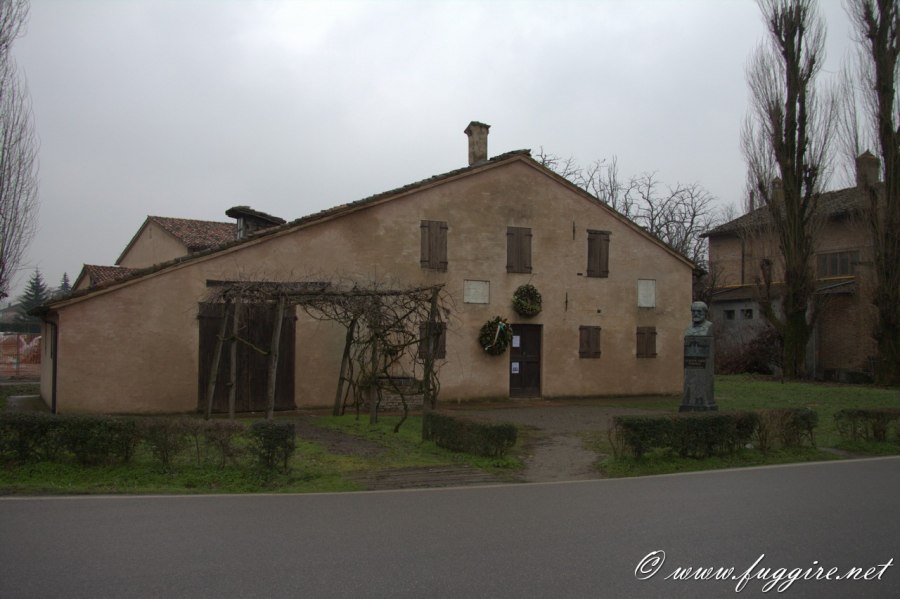Piacenza
Medieval Piacenza begins from Piazza Cavalli, which stands on the area of the ancient Roman Campus Martius, the military camp. This is attested by the stone inscription "haec est ara Bellonae" found during the excavations of the foundations of the Palazzo Comunale known as the "Gothic". Bellona was in fact, in mythology, wife and sister of Mars, god ruler of armies. The Gothic mass therefore dominates the main space of the city centre.
It was commissioned in 1281 by Alberto Scoto, leader of the merchants and Ghibelline lord of the city, descendant of a Scottish knight who came to Piacenza following Charlemagne. Of Lombard ogival style, with the frame adorned with arches, the Ghibelline swallow-tailed battlements, the central turret which encloses the bell tower and the two lateral turrets, it is an outstanding example of medieval civil architecture, whose clear structure stands out for its quality. of proportions to many similar buildings in the North. On a marble base, opened by a Gothic loggia with pointed arches, the upper floor is set, with Romanesque shapes, with full-centre arches pierced by slender triple-lancet windows. The contrast between the pink marble of the lower floor and the terracotta decorated with geometric motifs of the upper windows creates an effect of surprising elegance. On the short side, with three arches, note the rose window and the sloping frame as if to suggest an ecclesiastical influence. Here we can see a lowered extension of the building, which remained interrupted. A Madonna and Child, from the 16th century. XIII, once placed in a niche on the facade, is now preserved in the Civic Museum, and replaced by a copy. The Gothic hall (40 x 16 m) with an architraved wooden ceiling and pictorial decorations is now restored and accessible.
A short distance away is the church of San Francesco. Built between 1278 and 1363 by order of the Ghibelline Ubertino Landi, in Lombard Gothic style with a terracotta façade. Work of the minor friars who wanted to expand the original church, it was transformed, at the end of the 18th century, into a hospital and warehouse. After Napoleon´s exile, it was returned to the religious and in 1848 the annexation of Piacenza to the kingdom of Piedmont was proclaimed.
